Key takeaways
- Negative space in photography enhances the subject by creating balance and emotional resonance, allowing viewers to focus on the intended narrative.
- Effective use of negative space involves simplification, framing, and intentional positioning to guide the viewer’s eye and convey mood.
- Common mistakes include over-cluttering the frame and neglecting the emotional impact of negative space, which can dilute the image’s strength.
- Practicing with deliberate empty spaces, experimenting with angles, and reviewing shots helps develop skills in utilizing negative space effectively.
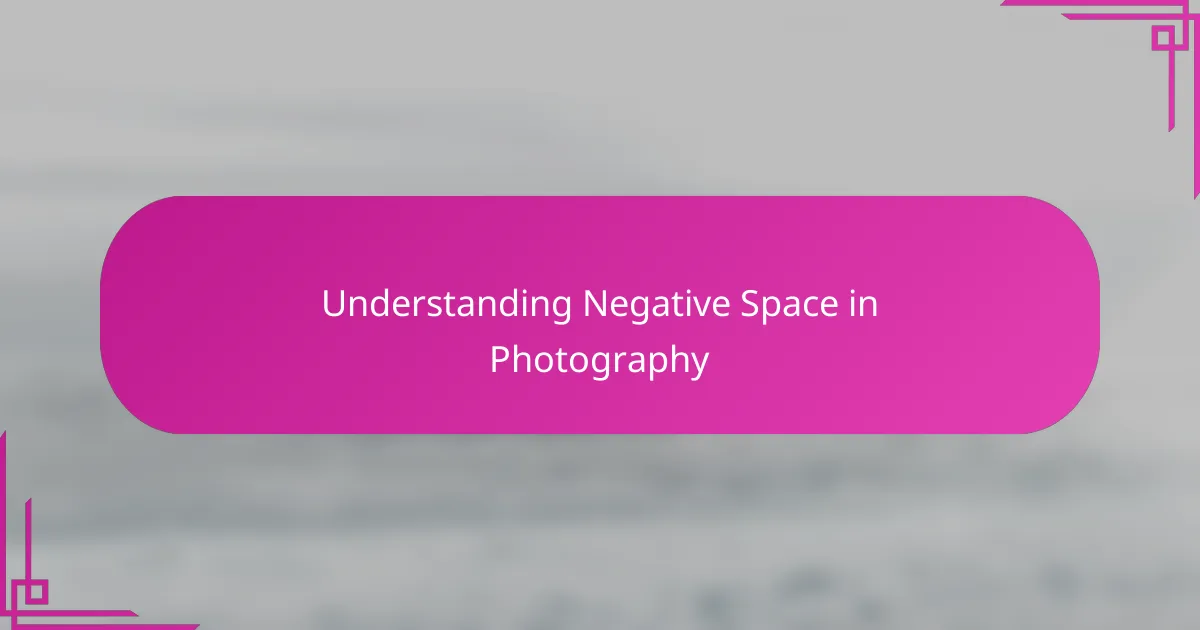
Understanding Negative Space in Photography
Negative space in photography is essentially the empty or unoccupied areas around the main subject. When I first started noticing it, I realized how powerful this emptiness could be—it’s not just about what’s in the frame, but what’s intentionally left out. Have you ever felt that a photo breathes more when there’s space to let your eyes rest? That’s the magic of negative space.
From my experience, negative space isn’t just background; it creates balance and highlights the subject’s story in street photography. It can evoke emotions like loneliness or freedom depending on how it’s used. I remember capturing a lone pedestrian against a vast, empty sidewalk—the negative space around them amplified their isolation and made the moment more poignant.
Understanding negative space also means learning to see beyond clutter and distractions. It forces you to ask, “What do I want the viewer to focus on?” This perspective shift has taught me to simplify my compositions, making each shot more intentional and expressive. In street photography, where chaos is common, negative space becomes my tool to carve out meaning from the everyday hustle.
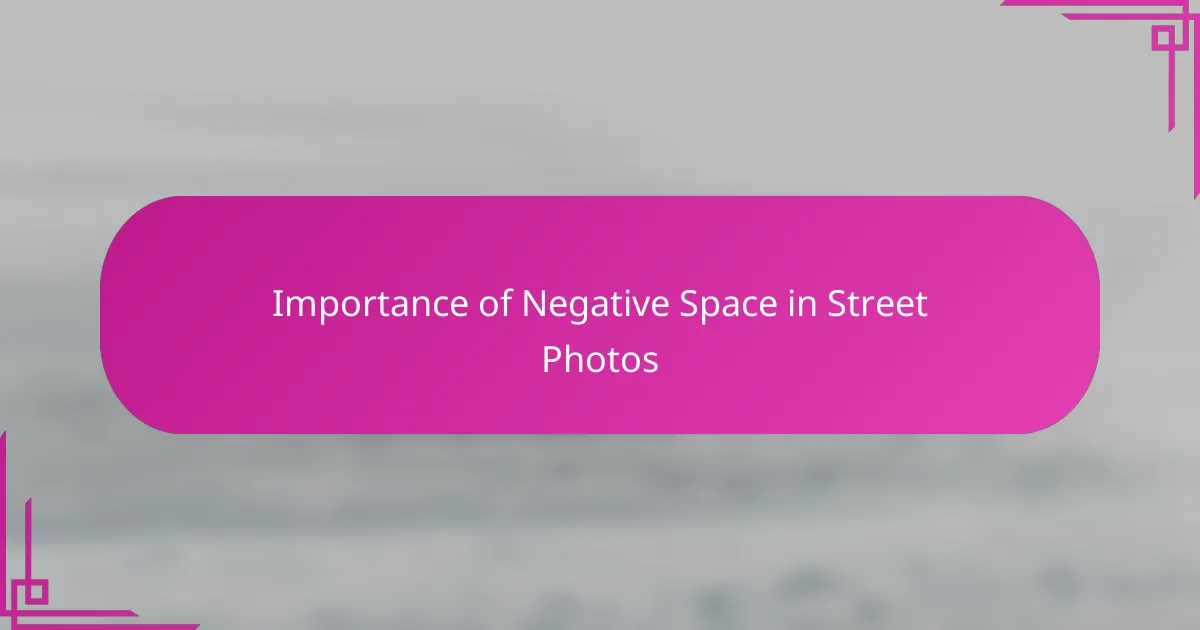
Importance of Negative Space in Street Photos
I’ve found that negative space in street photos isn’t just a compositional tool—it’s what gives the image room to breathe and invites viewers to linger. When I include ample empty space around my subject, it feels like I’m giving that moment in the city a sort of quiet pause amid the chaos. Have you ever noticed how a single figure standing against a broad expanse of sidewalk suddenly feels more powerful than when surrounded by clutter?
The importance of negative space shines through when I want to evoke mood. In one shot, a man waiting alone at a bus stop seemed weighed down by the empty street stretching out behind him. That emptiness didn’t just frame him; it told a story of solitude, of time suspended. For me, it’s this emotional resonance that makes street photos memorable.
Moreover, negative space helps direct the eye exactly where I want it. Without it, the viewers might get lost in busy backgrounds. I’ve learned that leaving parts of the frame intentionally empty is like giving the viewer a visual path to follow—so the story doesn’t get lost in the noise. Have you tried letting silence speak through your images? It’s surprising how much that “quiet” shapes what we see.
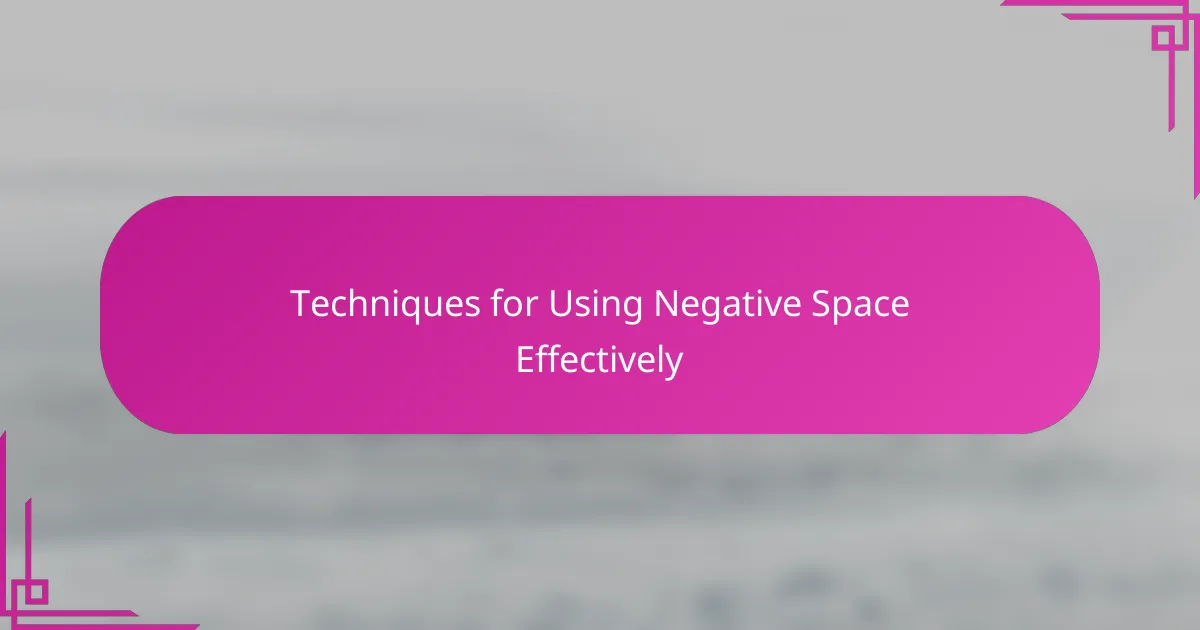
Techniques for Using Negative Space Effectively
When I think about using negative space effectively, the first technique that comes to mind is simplicity. I try to isolate my subject by surrounding it with ample empty space, which often makes the subject more striking. Have you ever noticed how a single person standing in a vast open area almost demands more attention? That’s the power of simplicity at work.
Another technique is to play with framing and positioning. Placing the subject off-center—sometimes following the rule of thirds—lets the negative space interact dynamically with the subject. From my experience, this creates a natural flow that guides the viewer’s eyes through the image, making the composition feel more balanced and intentional without overcrowding the frame.
Lastly, I like to consider the emotion I want to convey when using negative space. Whether it’s loneliness, freedom, or anticipation, the emptiness around the subject amplifies those feelings. I recall one photo where a cyclist moved through a long stretch of empty street—the vast negative space around them spoke volumes about movement and solitude. How often do you use empty space to enhance mood in your shots? It’s a subtle but powerful shift in storytelling.
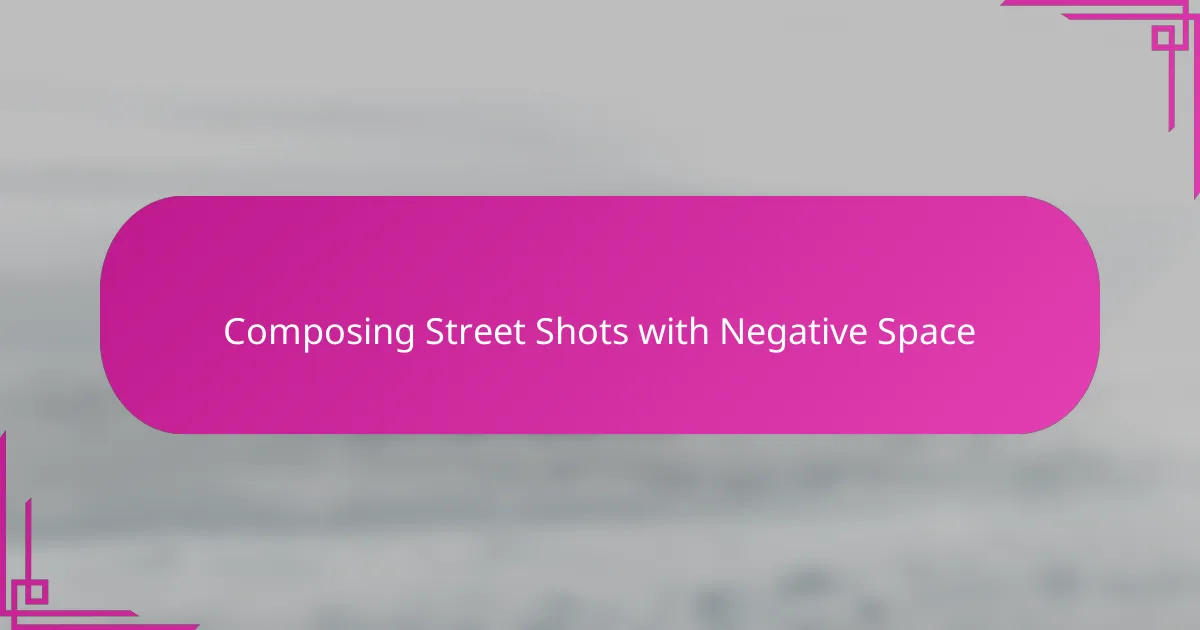
Composing Street Shots with Negative Space
When composing street shots with negative space, I often look for moments where the emptiness doesn’t compete but rather complements the subject. Have you ever noticed how placing a figure against a large, open wall or sky can make them seem more significant, even if they’re small in the frame? That contrast between subject and empty space draws my eye immediately and sets the mood without distraction.
I’ve also found that the way I position negative space can change the story I’m telling. Sometimes, I leave more room in front of a moving subject as if to suggest where they’re headed, creating a sense of anticipation. Other times, packing them into one corner with a vast void around them conveys isolation or vulnerability—little choices that completely shift the atmosphere of the image.
There’s a fine balance when using negative space in street photography. Too much emptiness risks making the photo feel sparse, while too little clutters the scene. Over time, I’ve learned to trust my gut: if the negative space enhances the emotion I want to share rather than just filling it, then my composition feels right. Have you played around with this idea of “visual breathing room” in your own shots? It’s amazing how it can transform a simple street moment into a compelling story.
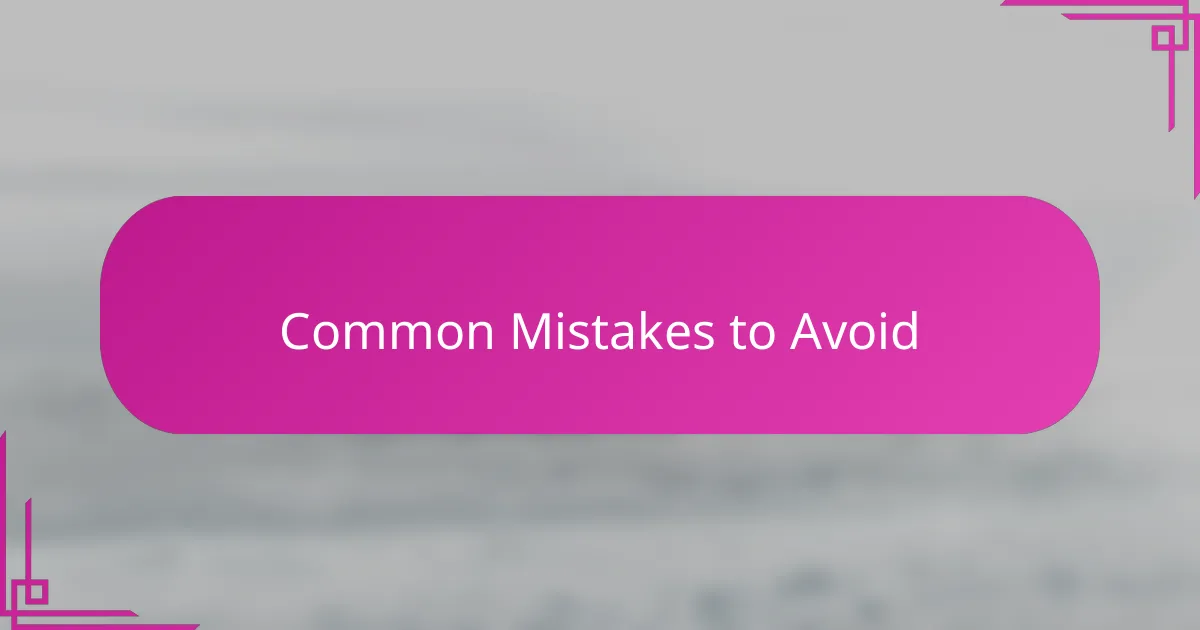
Common Mistakes to Avoid
One common mistake I see is cluttering the frame and thinking that every detail needs to be included. Early on, I used to cram too much into the shot, which diluted the impact of negative space. Have you ever felt your eye racing around a photo with no place to rest? That overwhelm often means the negative space isn’t doing its job—it should simplify, not complicate.
Another trap is misjudging the balance between subject and emptiness. Sometimes, I’ve left so much negative space that the subject almost disappears, and the photo loses its punch. It’s tricky, but I’ve learned that the empty space needs to support the story without swallowing it whole. How much emptiness feels “just right” can depend a lot on the mood you want to create.
Finally, I’ve noticed many photographers forget to consider how negative space affects emotion. In my earlier work, I treated it like a graphic element rather than a storyteller. But negative space can amplify feelings like solitude or anticipation—ignoring that means missing out on a powerful tool. Have you tried shifting your mindset to see empty areas as emotional spaces, not just blank spots? It changed how I approach every shot.
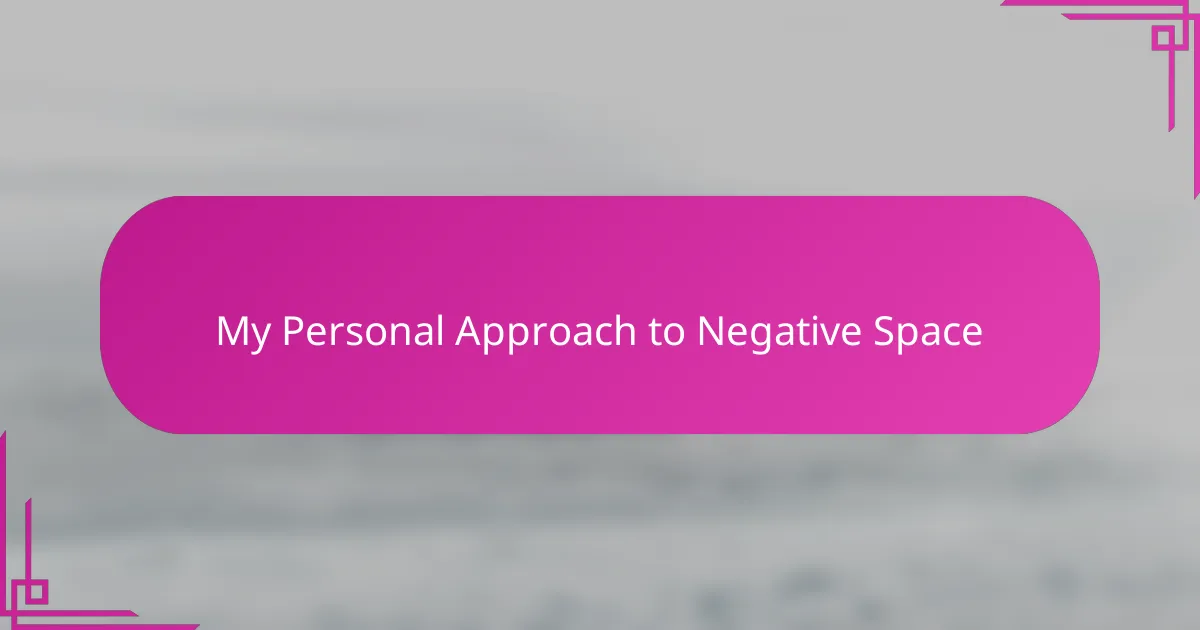
My Personal Approach to Negative Space
For me, negative space isn’t an afterthought; it’s an essential part of composing a street photo. I intentionally seek out moments where the emptiness can become as meaningful as the subject itself. It’s like orchestrating a silent conversation between the figure and the void around them—have you ever felt that tension between presence and absence in your images?
Sometimes, I find myself pausing, scanning a bustling street, waiting for that perfect stretch of quiet within chaos. When I do, I know the negative space will give my subject room to breathe and the viewer space to reflect. This deliberate choice often leads to shots that feel more contemplative, almost like poetry written in light and shadow.
I also approach negative space as a way to tell stories without words. By curating what I leave out, I shape the mood and invite viewers to project their own emotions onto the scene. Have you noticed how a sparsely framed photo can pull you in more deeply than one crowded with details? That’s the subtle power I try to harness every time I shoot on the streets.
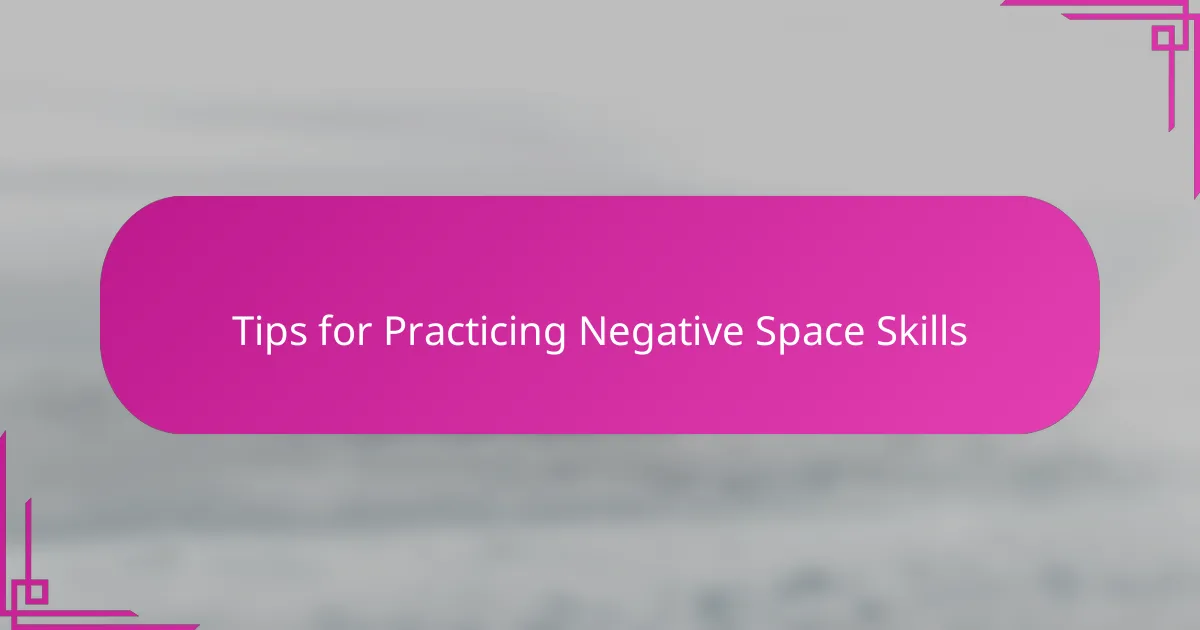
Tips for Practicing Negative Space Skills
When I first practiced using negative space, I made it a habit to focus on one subject at a time and deliberately leave large areas of the frame empty. This simple exercise taught me to appreciate how quiet spaces can amplify the subject’s presence. Have you ever tried shooting with the sole intention of finding emptiness around your subject? It really shifts how you see the scene.
Another tip that helped me was experimenting with different angles and compositions to see how the negative space interacts with the subject. Moving just a few steps to one side or crouching lower often revealed new ways the empty space could create balance or mood. I encourage you to keep your camera ready and be patient—sometimes the magic of negative space shows up when you least expect it.
Lastly, I found that reviewing my shots immediately after shooting helped me identify whether the negative space was helping or hindering the story. Asking myself, “Does this space make the subject stronger or just leave awkward gaps?” guided me toward more thoughtful compositions. What if you challenged yourself to edit ruthlessly for negative space—cutting out clutter and distractions? That practice alone can transform how your street photos speak to viewers.